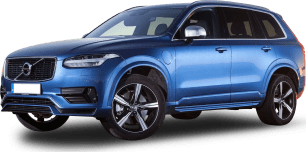I’ll just cut to the chase here: Sorry Musk haters, the Model Y Performance is truly, deeply impressive.
I didn’t stopwatch test its 0-100km/h sprint time, but 3.7 seconds certainly feels possible, and totally visceral.
Yes, the Model Y Performance will turn your groceries into a fine paste on the back of the boot if you stick your foot in, but the sprint time is far from the most impressive part of the drive experience.
I’d hand this honour over to the handling. The Model Y is simply incredible at holding onto the road.
Try as I might on one of Sydney’s best and curviest roads, the Model Y simply wouldn’t misbehave.
It’s almost surreal feeling the computers work their magic in the corners, taming the physics of a 2.0-tonne SUV, constantly fighting understeer or oversteer on the fly to keep it all tidy.
It does all of this in silence, with just the tyre roar to indicate your velocity. I must admit. I didn’t expect such ferocious ability from this car.
I certainly expected speed, but not this level of tidiness for something heavier and taller than a Model 3.
The trouble for a traditional car enthusiast, then, is the fact the Model Y is almost too good. It’s clinical in the way it attacks the road, and feels almost unfair, artificial, as though a computer is doing the work for you (it might as well be).
It feels risk-free, drama-free, feedback-free. While the experience of driving such a machine is nothing short of incredible, I somehow think it’s not the kind of thrills combustion enthusiasts are looking for.
Even the steering is artificial, with three heavily computer-assisted modes. I must say, 'Sport' and 'Standard' are a bit too heavy, with my preferred steering mode being the 'Chill' setting, which is the lightest and makes the car feel a bit easier to wrangle in the corners.
The three regen modes will actually appeal to a variety of tastes, allowing the car to behave either like a single-pedal EV (my preferred mode) or more like a combustion car, with a creep mode and a roll mode which will be more familiar to those who haven’t experienced an EV before, or are not fans of regenerative braking.
The new suspension has improved the ride significantly, with the Model Y Performance lacking the brittle edge which I experienced when the Model Y first arrived a few months ago.
It feels like it deals with sudden jolts a bit better, but make no mistake, this is still a firm ride, and the Y still has a firm frame.
While the ride has improved, it is still susceptible to significant amounts of jiggle, with the ride being notably busy over poor road surfaces. Still, it’s good to see this common issue with Teslas starting to move in the right direction.

